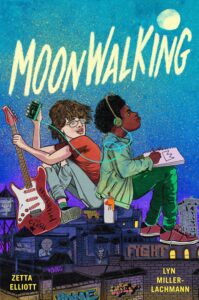The Grief Narrative in Books for Young Readers
Readers of novels for children and teens may notice the large number of stories in which major characters die, or have recently died and the protagonist is dealing with the aftermath. Many of those characters are orphans, which allows authors to send their protagonists on adventures that parents would undoubtedly prevent. But in others, parents, siblings, or friends die and the story addresses the protagonist’s grief. Given that fictional parents, siblings, or friends die at a far higher rate than those in real life, two question this raises are: Why is grief such a huge theme in books for young readers? And how can writers explore grief realistically while engaging and not depressing the reader?
 My theory for why death is so common in books for kids and teens is that it connects to other losses that young people experience. A child is more likely to lose a grandparent or a pet than a parent or sibling, but these, too, are often very close relationships that a child or teen may grieve. The loss of a friendship may loom large, especially if it’s a longtime friendship or the child struggles to make and keep friends. (I explore this kind of grief in Moonwalking through my autistic character JJ’s loss of Pie as a friend.) Children and teens can lose their homes and community when their family moves, and unlike the adults, they generally have no choice in the decision. A lot of things can feel like a death — many of us in the U.S. are now grieving the loss of our democracy and freedoms we took for granted, for instance — and the grief narrative can help process those feelings even if the novel is about a character dying and our loss is something else.
My theory for why death is so common in books for kids and teens is that it connects to other losses that young people experience. A child is more likely to lose a grandparent or a pet than a parent or sibling, but these, too, are often very close relationships that a child or teen may grieve. The loss of a friendship may loom large, especially if it’s a longtime friendship or the child struggles to make and keep friends. (I explore this kind of grief in Moonwalking through my autistic character JJ’s loss of Pie as a friend.) Children and teens can lose their homes and community when their family moves, and unlike the adults, they generally have no choice in the decision. A lot of things can feel like a death — many of us in the U.S. are now grieving the loss of our democracy and freedoms we took for granted, for instance — and the grief narrative can help process those feelings even if the novel is about a character dying and our loss is something else.
In teaching my writing workshops and helping writers develop and revise their stories, I encounter a lot of grief narratives. I’ve had to think about how to approach these because in my own writing, I’m loath to kill characters. For years, I believed that killing off a character was an emotional shortcut, of using grief to engage readers instead of working to find other ways to explore loss, absence, conflict, and betrayal. My original draft of Rogue killed off two characters — an elderly neighbor of Kiara’s and her friend Chad’s younger brother — but they came off as melodramatic, another way of saying “emotional shortcut.” With the help of my brilliant editor, I was able to keep the characters alive while using what did happen to them to raise the tension between Kiara and Chad. Having practiced those techniques in Rogue, I could use them again, with more skill and less assistance with revision, in Moonwalking. (That said, there is a bit of a grief narrative in Moonwalking, as Pie’s artistic mentor Ricky was shot and killed sometime before the novel begins, and Pie is working on a mural to honor this friend.)
My one true grief narrative is Torch, so I’ve been thinking about how I approached this story of the three best friends of a teenager who sets himself on fire in Czechoslovakia in 1969 to protest the Soviet invasion and occupation that crushed their promise of freedom during the Prague Spring of the previous year. I also consulted other resources on writing grief narratives in order to offer advice to anyone else who has killed off a character whose death is meaningful to the protagonist, or who is writing about another big loss in a young character’s life. (By the way, I add the phrase “meaningful to the protagonist” because there are several YA genres such as mystery and horror where the focus is not on the loss of life and its emotional impact, but rather on solving a crime or preventing the protagonist and people who are meaningful to them from meeting the same fate.)
The first advice is to understand and explore the stages of grief, as described by the psychiatrist and author Elisabeth Kübler-Ross — denial, anger, bargaining, depression, and acceptance. These don’t always occur in the same order, and they can reoccur at different points over time. Along with these stages is the very human attempt to find answers for why the death occurred, and who or what may be to blame. Children and teens may look for answers when there are none, and they may feel guilt for what happened to their parent, sibling, or friend. In Torch, all three teens question themselves and if they could have done more to keep Pavol alive. They continue to do so even after they’ve achieved a level of acceptance of his death and made different choices for their own lives and even though those different choices mean experiencing another kind of loss.
 Second, for a death to be meaningful, the character’s relationships with your protagonist(s) and other characters has to be meaningful as well. It’s one of the reasons high-body-count thrillers and horror don’t qualify as grief narratives (and a reason those genres aren’t my favorites, as I don’t like fiction that dehumanizes characters). The saying commonly attributed to Stalin, “One death is a tragedy. A million deaths is a statistic” applies here. Show the characters in their relationships with each other, how much they’re connected to each other and how much it will affect the survivors if their parent, sibling, or friend is no longer with them. Don’t assume emotional impact simply because a child loses a parent. Think of moments shared between the two characters and show those moments via real-time or flashback scenes. In Torch, Pavol is the point of view character in the first chapter and in part of the fifth chapter in an earlier timeline, and he resurfaces in flashback scenes and in the recollections of his three friends. I wanted readers to see him as very much alive in the other characters’ love for him and how they think of him when making choices for their own lives. The loss needs to have consequences for the survivors — all of them. Do the other character draw closer together, or do they come apart after the death? The most common impact is for the bonds between surviving characters to weaken, as the one who died was the one who held them all together. A surviving parent works all the time, not only out of necessity because the family needs the income, but also because that parent is trying to avoid dealing with grief, without considering the needs of other family members who are also grieving. In this type of story arc, the surviving characters usually find their way back to each other and reknit their bonds into a new normal. A less common pattern is the one in Torch, or in the book that served for me as the mentor text for Torch, Will Kostakis’s The Sidekicks. In both books, the three main characters considered the one who died to be their best friend, but they were not friends with each other. In The Sidekicks, the three very different surviving teens come together in a new relationship, in which they’re not “sidekicks” to their friend Isaac, and they create at their school a proper memorial to Isaac. In Torch, the coming together of the three teens who were not previously friends stands in the face of the totalitarian regime’s efforts to punish them separately for their association with an “enemy of the state.” Hanging over them is the fear that any one of them could betray the rest for their own advantage, and the threat of even greater consequences if they’re found in the company of each other, yet the only path to survival may be through sticking together.
Second, for a death to be meaningful, the character’s relationships with your protagonist(s) and other characters has to be meaningful as well. It’s one of the reasons high-body-count thrillers and horror don’t qualify as grief narratives (and a reason those genres aren’t my favorites, as I don’t like fiction that dehumanizes characters). The saying commonly attributed to Stalin, “One death is a tragedy. A million deaths is a statistic” applies here. Show the characters in their relationships with each other, how much they’re connected to each other and how much it will affect the survivors if their parent, sibling, or friend is no longer with them. Don’t assume emotional impact simply because a child loses a parent. Think of moments shared between the two characters and show those moments via real-time or flashback scenes. In Torch, Pavol is the point of view character in the first chapter and in part of the fifth chapter in an earlier timeline, and he resurfaces in flashback scenes and in the recollections of his three friends. I wanted readers to see him as very much alive in the other characters’ love for him and how they think of him when making choices for their own lives. The loss needs to have consequences for the survivors — all of them. Do the other character draw closer together, or do they come apart after the death? The most common impact is for the bonds between surviving characters to weaken, as the one who died was the one who held them all together. A surviving parent works all the time, not only out of necessity because the family needs the income, but also because that parent is trying to avoid dealing with grief, without considering the needs of other family members who are also grieving. In this type of story arc, the surviving characters usually find their way back to each other and reknit their bonds into a new normal. A less common pattern is the one in Torch, or in the book that served for me as the mentor text for Torch, Will Kostakis’s The Sidekicks. In both books, the three main characters considered the one who died to be their best friend, but they were not friends with each other. In The Sidekicks, the three very different surviving teens come together in a new relationship, in which they’re not “sidekicks” to their friend Isaac, and they create at their school a proper memorial to Isaac. In Torch, the coming together of the three teens who were not previously friends stands in the face of the totalitarian regime’s efforts to punish them separately for their association with an “enemy of the state.” Hanging over them is the fear that any one of them could betray the rest for their own advantage, and the threat of even greater consequences if they’re found in the company of each other, yet the only path to survival may be through sticking together.
 This brings me to the third point. A grief narrative needs to have something else going on as well. Novels that hold readers’ interest can’t be only about one thing, as I found out with a failed manuscript ten years ago. Novels need layers. They need a main plot and subplots that connect with the main plot. In The Sidekicks, the grief narrative is the main plot as Ryan, Harley, and Miles come to terms with Isaac’s death and how to remember him. But each of their separate narratives has a subplot that is unique to them. For instance, Ryan, a championship swimmer, is also coming to terms with the fact that he is gay, and part of forging new connections with Harley and Miles is coming out to them. In Torch, the main narrative is the struggle for survival in the face of government persecution that brings Štěpán, Tomáš, and Lída together despite their differences. The grief narrative is the subplot, portraying their separate efforts to understand Pavol’s death and to keep his memory alive in a place where his name is no longer mentioned publicly and memorializing him is a crime. In any case, readers need to see the interaction between an external plot that emphasizes action and an internal plot that emphasizes the protagonist’s emotions, desires, needs, beliefs, and misbeliefs. A grief narrative is usually the latter, but it can be either an A-plot (main plot) or B-plot (principal subplot).
This brings me to the third point. A grief narrative needs to have something else going on as well. Novels that hold readers’ interest can’t be only about one thing, as I found out with a failed manuscript ten years ago. Novels need layers. They need a main plot and subplots that connect with the main plot. In The Sidekicks, the grief narrative is the main plot as Ryan, Harley, and Miles come to terms with Isaac’s death and how to remember him. But each of their separate narratives has a subplot that is unique to them. For instance, Ryan, a championship swimmer, is also coming to terms with the fact that he is gay, and part of forging new connections with Harley and Miles is coming out to them. In Torch, the main narrative is the struggle for survival in the face of government persecution that brings Štěpán, Tomáš, and Lída together despite their differences. The grief narrative is the subplot, portraying their separate efforts to understand Pavol’s death and to keep his memory alive in a place where his name is no longer mentioned publicly and memorializing him is a crime. In any case, readers need to see the interaction between an external plot that emphasizes action and an internal plot that emphasizes the protagonist’s emotions, desires, needs, beliefs, and misbeliefs. A grief narrative is usually the latter, but it can be either an A-plot (main plot) or B-plot (principal subplot).
I hope this is helpful advice as you write your grief narrative for young readers. Feel free to add other suggestions, as I haven’t discussed things like humor and the role of setting in conveying grief. While there are a lot of grief narratives out there, we need new ones as our young readers face an increasingly challenging world, one in which a character’s death can stand in for the myriad losses we face in our lifetimes.






Hi Lyn
So chuffed to see The Sidekicks helped shaped your work. I’ll look out for it.
All the best
Will
Thank you for writing such a beautiful story, Will!
Lyn, interesting thoughts on the grief narrative. Makes sense that Torch is your grief narrative. In pondering a manuscript I put down, I wonder now if it is a grief narrative. The character is running away from her grief. And I ran away from the novel because of her massive feelings.
A lot of people are drawn to grief narratives, but they’re hard to write because people want to run away from the strong feelings. And then it doesn’t work because the writer is glossing over what’s happening to the main character and how she feels. When I was writing Torch, I missed Pavol so much. I really felt the loss of this beautiful boy, as if he were real to me. And although he was based on a real person, he took on a life of his own.